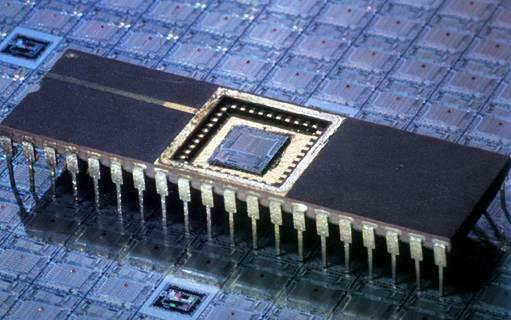 Reverse Engineering ATMEL Chip AT32UC3C264C Flash
Reverse Engineering ATMEL Chip AT32UC3C264C Flash
Reverse Engineering ATMEL Chip AT32UC3C264C Flash memory’s scheme diagram and cut off the security fuse bit by MCU cracking method, focus ion beam can be applied for Microcontroller code extraction;

One 4-Channel 20-bit Pulse Width Modulation Controller (PWM)
– Complementary outputs, with Dead Time Insertion
– Output Override and Fault Protection
Two Quadrature Decoders
One 16-channel 12-bit Pipelined Analog-To-Digital Converter (ADC)
– Dual Sample and Hold Capability Allowing 2 Synchronous Conversions
– Single-Ended and Differential Channels, Window Function
Two 12-bit Digital-To-Analog Converters (DAC), with Dual Output Sample System
Four Analog Comparators
Six 16-bit Timer/Counter (TC) Channels
– External Clock Inputs, PWM, Capture and Various Counting Capabilities
One Peripheral Event Controller
– Trigger Actions in Peripherals Depending on Events Generated from Peripherals or from Input Pins
– Deterministic Trigger after samsung microcontroller S3F9454 software breaking
– 34 Events and 22 Event Actions
Five Universal Synchronous/Asynchronous Receiver/Transmitters (USART)
– Independent Baudrate Generator, Support for SPI, LIN, IrDA and ISO7816 interfaces
– Support for Hardware Handshaking, RS485 Interfaces and Modem Line
Two Master/Slave Serial Peripheral Interfaces (SPI) with Chip Select Signals
One Inter-IC Sound (I2S) Controller
– Compliant with I2S Bus Specification
– Time Division Multiplexed mode
Three Master and Three Slave Two-Wire Interfaces (TWI), 400kbit/s I2C-compatible
QTouch® Library Support
– Capacitive Touch Buttons, Sliders, and Wheels
– QTouch® and QMatrix® Acquisition
On-Chip Non-intrusive Debug System
– Nexus Class 2+, Runtime Control, Non-Intrusive Data and flash Trace
– aWire™ single-pin flashming trace and debug interface muxed with reset pin
– NanoTrace™ provides trace capabilities through JTAG or aWire interface
3 package options
– 64-pin QFN/TQFP (45 GPIO pins) package
– 100-pin TQFP (81 GPIO pins)
– 144-pin LQFP (123 GPIO pins)
Two operating voltage ranges:
– Single 5V Power Supply
– Single 3.3V Power Supply